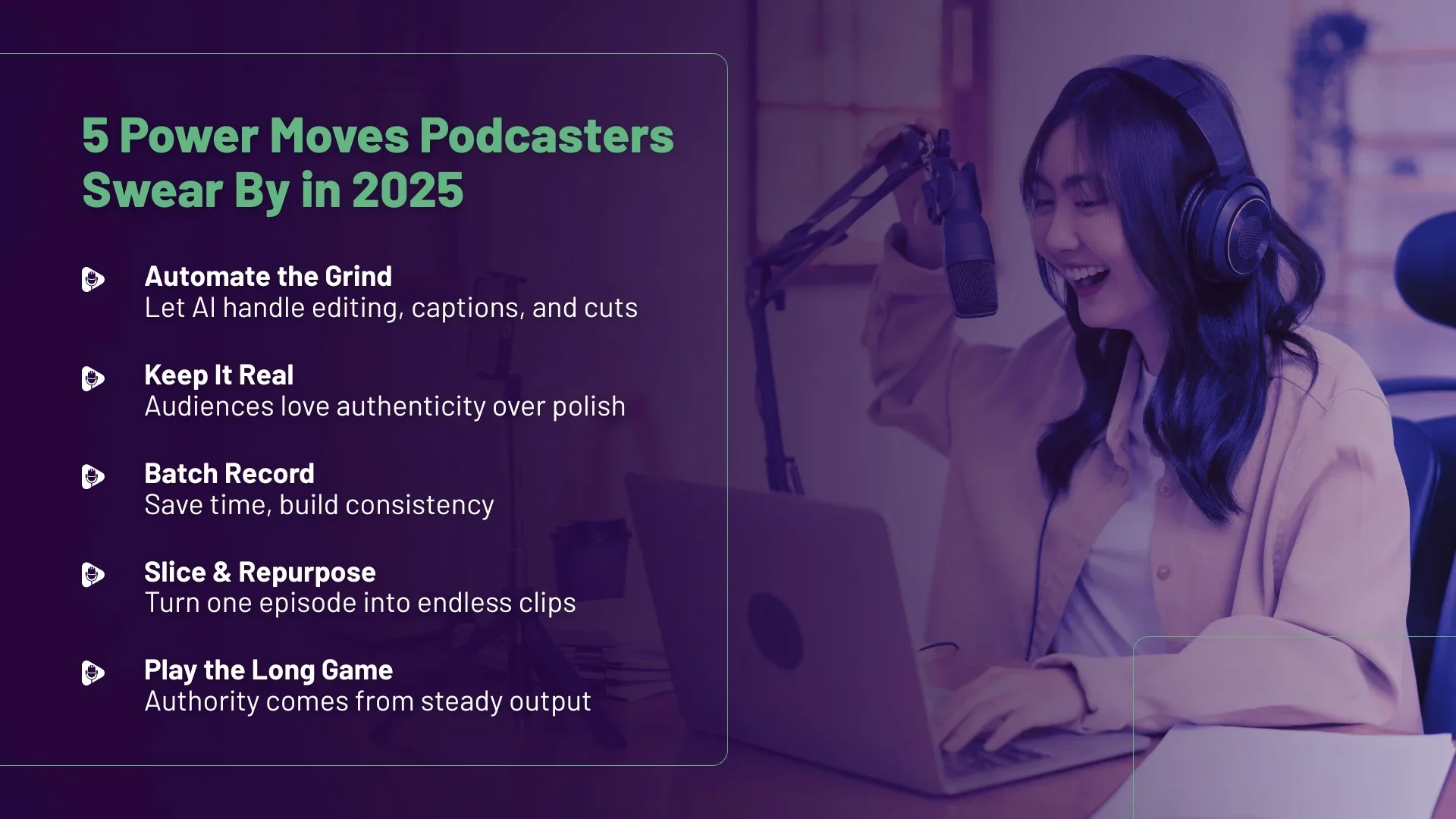Why Video Podcasts Are Booming in 2025 — and How to Stay Ahead of the Curve
For years, podcasts lived comfortably in the world of audio. A microphone, a quiet room, and an audience willing to listen: that was the formula. It worked because people wanted intimacy and insight without distraction.
But that’s no longer the whole story. In 2025, video podcasts are everywhere. The format has moved from a niche experiment to the mainstream. Audiences want to see who is talking, not just hear them. A laugh, a nod, or a thoughtful pause brings the conversation to life in a way audio alone cannot.
Platforms have accelerated the shift. YouTube treats podcast clips like gold. LinkedIn pushes video posts into feeds where text often struggles. TikTok thrives on short, sharp moments taken from longer episodes. Even Spotify, once proud of its audio-first roots, is investing heavily in video podcasting. If you are sticking with audio only, you are quietly falling behind.
Why People Lean Toward Video
Several factors are fueling this surge:
Audiences expect visuals - Content consumption is now shaped by video-first platforms. We have grown used to seeing faces and expressions alongside words. A podcast that shows the conversation feels more personal, more credible.
Algorithms reward it - Every major platform wants video because it holds attention longer. A five-minute clip of a podcast travels further than a graphic quote card. That natural advantage means video podcasts spread faster without extra promotion.
Brands prefer it - Advertisers see higher value when their message is both seen and heard. For partnerships and sponsorships, video opens the door to product placements, visual storytelling, and stronger brand recall.
Technology made it simple - What used to require a studio and a team can now be done from a home office. With an AI podcast editor or an AI podcast video editor, you can produce a professional episode in hours instead of weeks.
The Quiet Influence of AI
Ask any podcaster what slows them down, and editing usually tops the list. Cleaning audio, syncing video, cutting segments, it used to take days of work.
That’s why AI podcast editing has become such a turning point. Tools can now handle noise reduction, generate captions, or even suggest highlight clips automatically. What once kept episodes sitting in post-production for weeks can now be done in an afternoon.
For many creators, that shift means more than efficiency. It lowers the barrier to entry. Small businesses and independent voices can now produce content that competes with big studios. An AI video editor for podcast production has become less of a luxury and more of a standard tool.
Importantly, AI is not replacing creativity. It is just removing the friction that held so many people back. The storytelling, the expertise, the human connection: that still belongs to the host.
How to Stay Ahead Without Burning Out
The rise of video podcasts creates opportunity, but it also raises expectations. Viewers are more discerning now. Consistency and quality matter as much as personality.
Simplify your workflow
Do not spend energy on tasks that technology can handle. AI podcast editing services are designed to cut repetition out of the process so you can focus on what matters most.
Keep it real.
Viewers tune in for genuine conversations, not perfectly polished broadcasts. Let the technology handle mechanics while you stay focused on authenticity.
Think in series, not episodes.
A one-off video might get attention, but consistency builds authority. Reliable podcast editing services make it easier to keep producing without sacrificing quality.
Where Ukumi Fits In
This is exactly where platforms like Ukumi make a difference. Ukumi blends the speed of AI podcast editing services with the oversight of human expertise. That combination delivers professional results without the endless delays that once defined post-production.
For businesses and creators, that matters. Instead of choosing between speed and quality, Ukumi makes both possible. The work that once dragged on for weeks now takes hours, freeing teams to focus on strategy, content, and audience growth.
Looking Ahead
The momentum behind video podcasts will not slow down. It fits neatly into the broader shift toward visual-first storytelling. Leaders, entrepreneurs, and creators who embrace the change now will find themselves in a stronger position tomorrow.
Those who rely on tools like an AI podcast video editor and invest in consistent podcast editing services will build a durable advantage. They will publish more frequently, repurpose content more easily, and reach audiences who expect a richer, more engaging experience.
The future of podcasting is not just heard. It is seen. The microphone still matters, but so does the camera.
And that brings us to the real question. Are you ready to show up on screen, not just on air?


